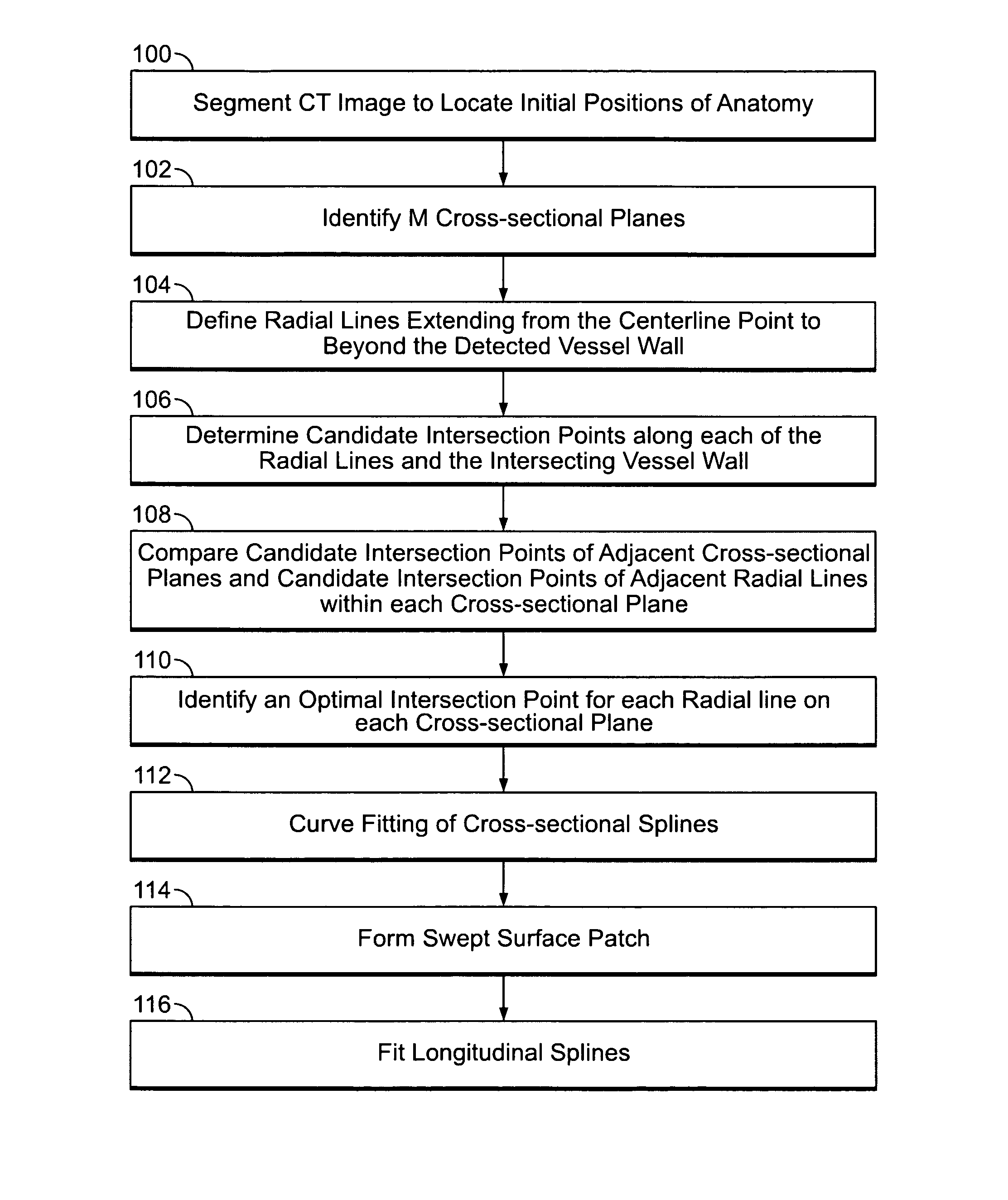Method and system for adjusting 3D CT vessel segmentation
a technology of adjusting system and 3d ct, applied in image analysis, image enhancement, instruments, etc., can solve the problems of symptomatic patients already at an advanced stage, soft plaque is not easily detectable, and the procedure is only performed on symptomatic patients
- Summary
- Abstract
- Description
- Claims
- Application Information
AI Technical Summary
Benefits of technology
Problems solved by technology
Method used
Image
Examples
Embodiment Construction
s or memories) may be implemented in a single piece of hardware (e.g., a general purpose signal processor, random access memory, hard disk, or the like). Similarly, the programs may be stand alone programs, may be incorporated as subroutines in an operating system, may be functions in an installed software package, and the like. It should be understood that the various embodiments are not limited to the arrangements and instrumentality shown in the drawings.
DETAILED DESCRIPTION OF THE INVENTION
[0021]FIG. 1 illustrates a pictorial view of a computed tomography (CT) imaging system 10. The system 10 includes a gantry 12 representative of a “third generation” CT imaging system. FIG. 2 illustrates a block diagram of the system 10 of FIG. 1, and will be discussed together with FIG. 1.
[0022]The gantry 12 has an x-ray source 14 that projects a beam of x-rays 16 toward a detector array 18 on the opposite side of the gantry 12. The detector array 18 is formed by a plurality of detector rows (...
PUM
 Login to View More
Login to View More Abstract
Description
Claims
Application Information
 Login to View More
Login to View More - R&D
- Intellectual Property
- Life Sciences
- Materials
- Tech Scout
- Unparalleled Data Quality
- Higher Quality Content
- 60% Fewer Hallucinations
Browse by: Latest US Patents, China's latest patents, Technical Efficacy Thesaurus, Application Domain, Technology Topic, Popular Technical Reports.
© 2025 PatSnap. All rights reserved.Legal|Privacy policy|Modern Slavery Act Transparency Statement|Sitemap|About US| Contact US: help@patsnap.com



